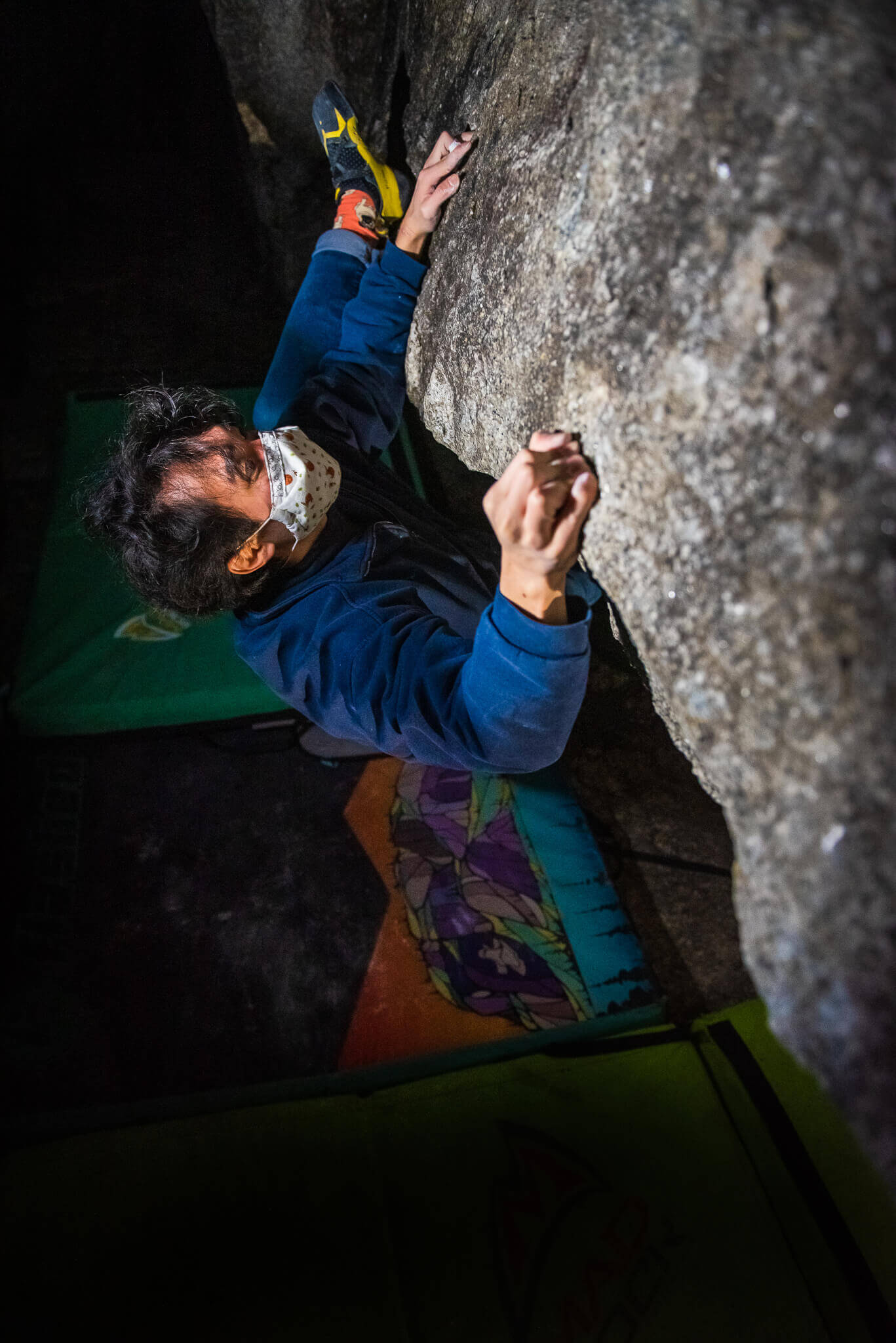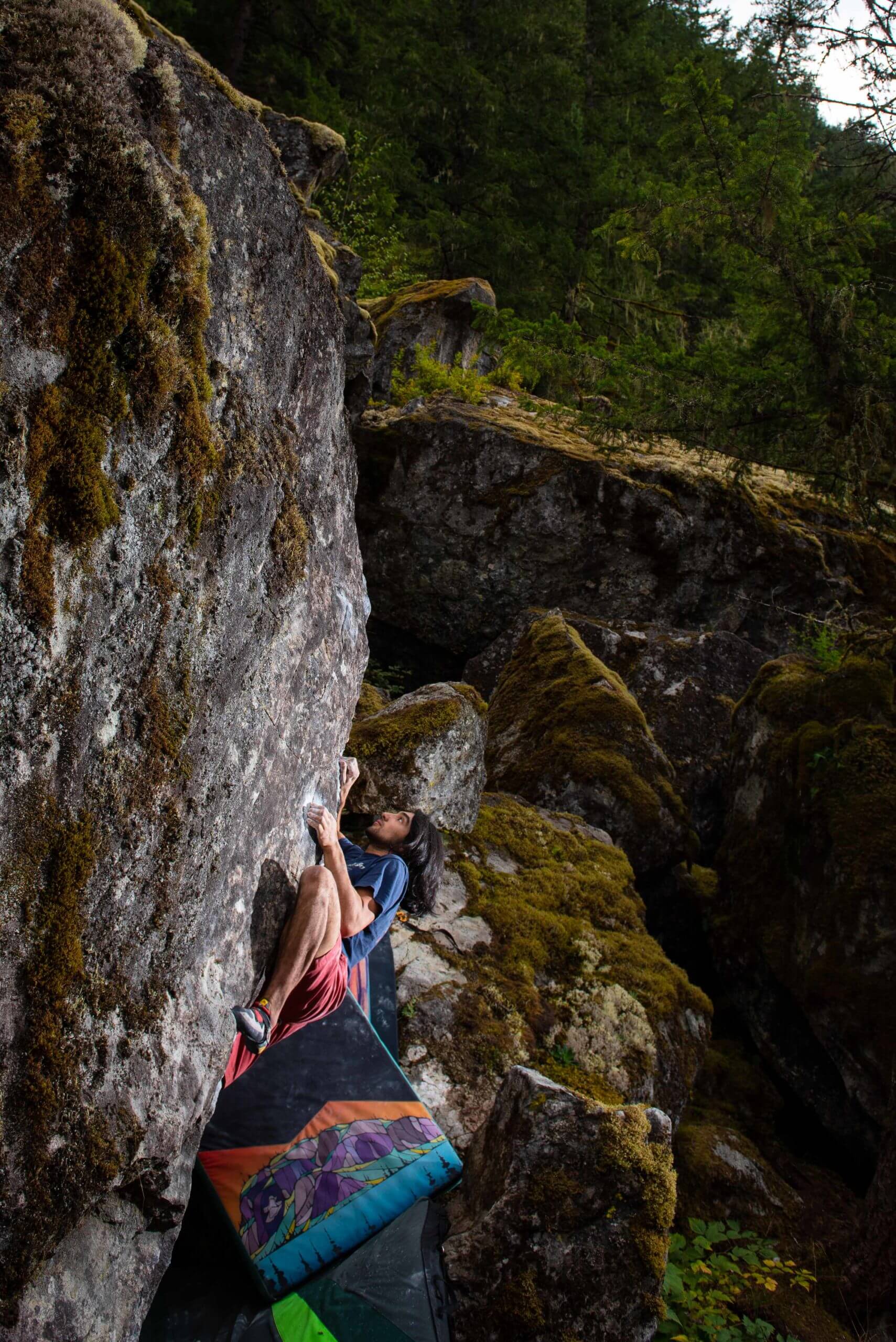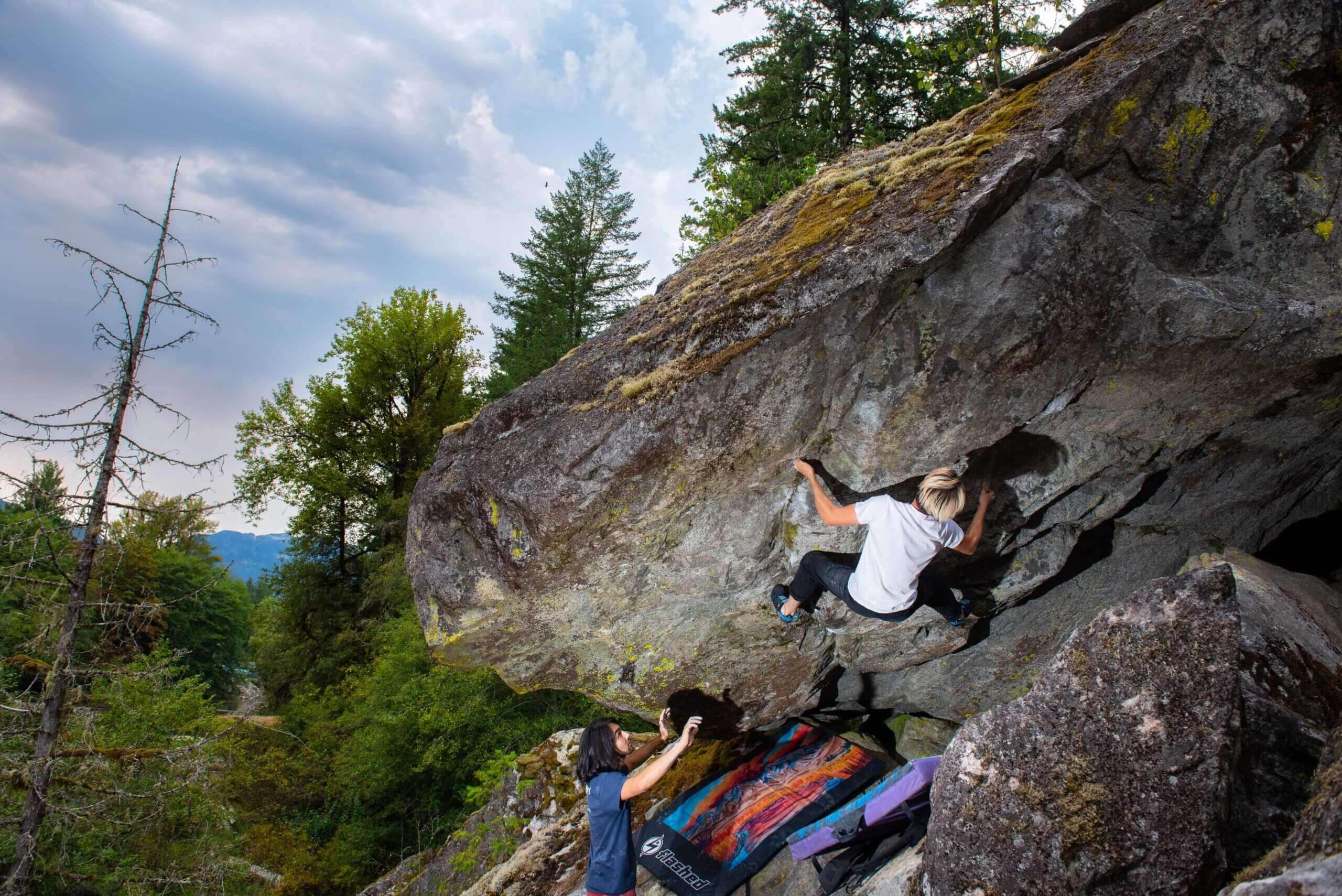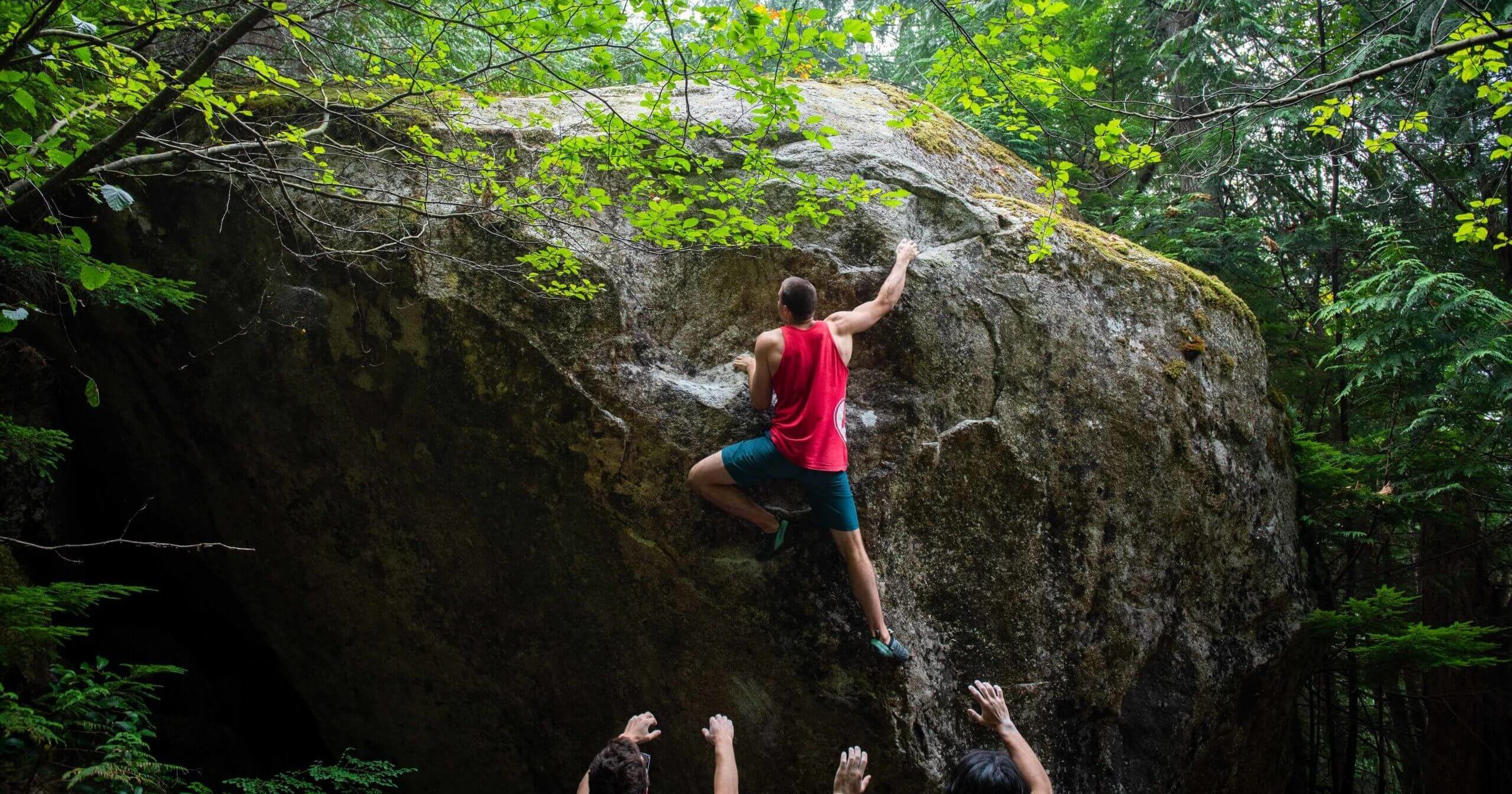Written by Jacob Scharfman
For the last three years, I have had the privilege to call Squamish my home. Squamish, British Columbia, is home to some of the best and most technical bouldering globally. Along with a friendly community largely dependent on the tourism revenue of visiting climbers and other adventure seekers. With COVID-19 spreading widely across our world, however, Squamish has struggled to balance limiting visiting climbers to keep the local community safe and keeping the tourism industry alive.
Travel Restrictions
During the peak season, thousands of boulderers from across the world normally flock to the base of the Chief in Squamish, British Columbia. Here lie some of the best boulders in the world. This, however, was not by any sense of the word a “normal year.” The pandemic had caused much of the crowds to be inhibited by closed borders and travel restrictions in the province. I had plans for various trips back to the States this summer to climb and reconnect with friends and family. These were canceled, like many other trips, in the face of Covid. Fewer people coming into Canada made the bouldering more solitary and engaging for the local community.


This presented a new unique opportunity, and ex-”comp-kid,” to redefine my climbing. For me, this meant exploring new sides of the sport. Leaving behind the most crowded areas searching for seclusion from the risk of Covid transmission. The privilege of living somewhere in which outdoor activity is accessible from quite literally one’s own doorstep can’t be overstated. I was able to find an untouched rock for development within just a few kilometers from my door. I made a point to continue exploring areas new to me. And to try more out-of-the-way boulders and routes to attempt to follow health regulations as closely as possible.
Lockdown
In March, when the Covid-19 pandemic really started to become apparent in Canada, our area entered our first “lockdown.” The gyms were closed, the parks were closed, and climbing was frowned upon by the community. And a mentality of not wanting to take up hospital beds through needless sports-related injuries. A few weeks into this phase of uncertainty, I came across a small boulder field of around 50 boulders. I spent time cleaning and uncovered a couple of dozen problems under the moss, all while a hostile shaming culture became the norm of the climbing world.
Our community witnessed climbers from all over condemn and criticize the ethics of climbing during a pandemic. Yet, many still went climbing secretly, creating an odd dichotomy in the sport. I found ways to justify myself through self-exceptionalism. That “I can go climbing because I am definitely the only one using these boulders.” I think it ultimately came down to luck. In our locality, we never ended up having overwhelmed hospitals or a large abundance of cases. I had a massive privilege in this, and it is one I am continually grateful for.

Conclusion
Today, we have lived with Covid-19 for just over a year, and our communities have learned much. We have higher levels of certainty around the effects of Covid, and we know better how we can continue to recreate safely. As restrictions allow and we begin to increase our time spent climbing outside, bouldering is an option to minimize risk.
Some good COVID-19 precautions include not climbing on the same boulders as other groups and wearing masks while on shared trails. Try to plan to explore less popular areas and try to avoid busy times, if possible. If another group has made it to a climbing site first, ask them whether they plan to move on or if they are okay sharing the climb while masked and reasonably distanced. Don’t impose yourself on others and respect their boundaries. Stay safe out there, folks!


